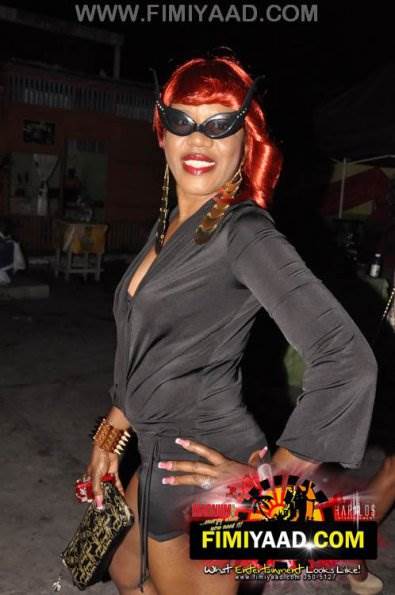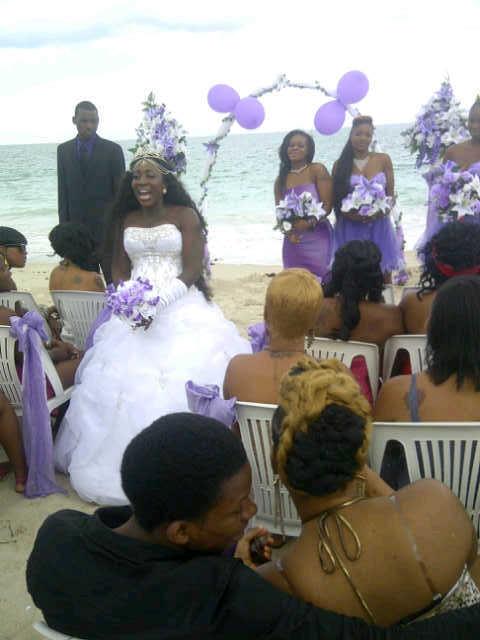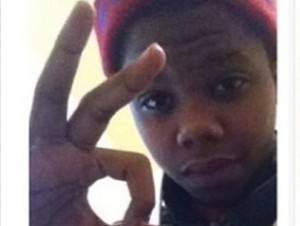GNOSTICISM- GOOD MORNING

Gnostic ideas have had an influence on Christianity
It is good for all of us to know something about the first-century Gnostic controversy, because this controversy continues to this very day, though in a different form. Gnosticism, and its cousin Neoplatonism (or Platonism), changed the face of Christianity by introducing ideas that have more affinity with pagan religions and philosophies than with the Judeo-Christian heritage represented by the Bible. This influence moved the Church away from its Hebrew heritage, notably regarding:
1. One, and only one, God. Gnostics and Neoplatonists influenced some Christians to embrace a God beyond being who could have multiple personalities.
2. The appreciation of Creation as reflecting the work of a good God, and the natural world as integrated with the supernatural world. Gnostics believed that the material world was the work of a lesser, evil deity, and therefore all that is material is unholy and ungodly.
3. The balance of knowledge and experience, with the idea that God is relational and reveals Himself in covenant with His people. Gnostics viewed “God” as beyond being, so to call God “the supreme being” would be to limit His greatness. This God was a far cry from the personal God of the Bible.
The Gnostic and Neoplatonic influence factored into the development of Trinitarian doctrine, as we document in our book One God & One Lord (Chapter 16). This influence is evident in such pro-Trinitarian arguments as: “God is mysterious,” or “If you believe in the Trinity you will lose your mind, but if you don’t believe in it you will lose your soul.” Secret knowledge, though not necessarily rational and biblically accurate knowledge, was the key to one advancing toward the Gnostic godhead. Trinitarian theologians continue to be the only ones who can explain or defend the Trinity, while most pastors and churchgoers just leave the complicated doctrine to the theologians. [For a website dedicated to the truth of One God & One Lord, visit www.BiblicalUnitarian.com]
Traditionally Jewish affirmation of the natural realm is exemplified in its concept of “kosher” foods. God made the food, but the world has become corrupted by sin. Therefore, food must be examined and blessed by a rabbi to be okay to eat. The same is true for sex. Rather than taking the perspective that many Gnostic and Platonic Christians have through the centuries, that sex is unclean in itself, Jews sanctified sex within marriage and considered it “pure” or “undefiled” (Heb. 13:4).
Gnostic tendencies toward a non-human Jesus in the early Church led monks and scribes who copied the manuscripts to add to the text to make it clearer that Jesus was a real human being. Some had been influenced to believe that Jesus did not sweat, defecate, or perform other normal human functions that were considered beneath him as the god-man. To counteract this, these scribes would add to the text things that would emphasize his humanity. Such is the case with the record in Luke 22:44 that depicts Jesus as having sweat like blood falling from his forehead. In his book, The Orthodox Corruption of Scripture, Bart Ehrman well documents this as a forgery. [1]
Gnostic teachings were being widely disseminated by the end of the first century, and John the apostle addressed this teaching in his Gospel. One interesting way that God inspired him to do this was by recording the miracle of the changing of water into wine in Cana of Galilee. This would have been a slap in the face to Gnostics, who had no way to explain why he would do a miracle like that. Christians who legalistically deny themselves and others wine or other forms of alcohol also have a tough time with that record. Jewish teaching in the Tanakh (the Old Testament) shares both the upside and the downside of drinking. Wine “…that gladdens the heart of man…” (Ps. 104:15; Zech. 10:7), but is also “…a mocker and beer a brawler; whoever is led astray by them is not wise” (Prov. 20:1). This affirms that God has provided fermented beverages, but expects humankind to be wise and not abuse them.
There are also forms of the denial of the physical body that are characteristic of Gnostic Christianity. For instance, even today some Christians feel that dancing is of the Devil, and who forbid even liturgical dance. But the Jewish perspective, and no doubt a part of first-century Church’s practice, was to rejoice before the Lord’s presence in dance. It is possible to dance using movements that are not sensual or provocative, and there is no biblical reason to believe that to so employ the body more fully in worship would be a sin.
There is no reason why today’s environmental movement should be led by atheistic evolutionists. Both Jews and Christians have a vested interest in the preservation of the wilderness areas and protecting our environment as the handiwork of God. The fact that sin has entered the world does not make the Creation of God unrecognizable as a masterpiece. We can clearly see the majesty of the Creator in the amazing beauty of the natural world, and should want to protect it as much as is reasonable. There are few things as awe-inspiring as to view pristine wilderness knowing that it is the work of God.
Another way that Gnostic or Platonic Christianity denies the material world is the way it teaches that the soul is immortal. The body, then, is considered unnecessary equipment, compromising the reality of, or the need for, resurrection. True biblical Christianity sees the body and soul as integral to one another, and neither being able to exist without the other. As we argue in our book Is There Death After Life?, believing in death as a graduation to a higher spiritual realm is not Christian as much as it is Gnostic and Platonic philosophy that undermines an appreciation of this earthly life. How many people have lost the will to live in a fight against sickness or injury believing that their death would usher them immediately into the presence of the Lord? [For further study see our topic on What Happens if You Die?]
Another way that Gnostic or Platonic Christianity still rears its head is when we see ministers given a pass by their denominations or churches when they fail to integrate their faith and ministries with their personal, private, and family lives. Their faith and ministry should be authenticated by their family life, not discredited. The ancient Jewish paradigm was expressed in this maxim: “To know the relationship of the rabbi with God, look in the face of his wife.”
1 Timothy 3:4, 5 and 12 say that to be an overseer or a deacon in the Church one must “…manage his children and his household well.” Ministers who detach themselves from their most intimate family relationships and think they can still be effective ministers have succumbed to Gnostic thinking that divorces belief from behavior.
We are called to integrate our “regular life” with our “spiritual life” so that the two are seamless. God is interested in the single sparrow, and He is also interested in every detail of our lives whether seemingly “spiritual” or not. To serve the true God is to be called to live an integrated life, where one’s faith and practice are integrated, producing fruit that is apparent to all.
THE RIOTS AND RIOTERS
— A candlelight vigil for a teenager shot by police in Brooklyn erupted into violence on the streets Monday night.
Outraged crowds wreaked havoc, ransacking stores, smashing car windows and beating up a Rite Aid clerk.
Police say the rowdy group marched along Church Avenue near the 67th Precinct station in East Flatbush following the vigil for 16-year-old Kimani Gray.
Authorities remain on high alert, with barricades blocking the entrance to the precinct. Police in riot gear were manning those barricades early Tuesday, vowing not to stand down anytime soon after the mayhem Monday.
The community’s outrage spilled over as the vigil turned violent. The protesters who planned the march were blocked from getting to the station, and then some turned their anger into whatever was in their path.
They trashed a Rite Aid, where a group attacked the manager. They also overturned garbage cans and destroyed a fruit stand.
Organizers say they regret that the rally got out of hand, but that it’s about more than one police shooting.
“I don’t want people to talk about, in detail, the one shooting,” City Councilman Jumaane Williams said. “This is bigger than that. This is the details of what people feel like day after day in this community. This is not an excuse for what happened. But let’s not ignore the explanation of why it happened.”
One person was arrested on disorderly conduct charges. There were no reports of officers injured.
Authorities say Gray, a reputed gang member, was with a group of other males in Brooklyn Saturday night and started acting suspiciously when he saw police in an unmarked car.
When officers identified themselves as they approached him, police say the teen pointed a .38-caliber revolver at the officers, who responded by firing 11 shots, striking him several times.
The two officers have been placed on administrative duty.
________________
Vigil for Brooklyn teen killed by cops turns into a full-scale riot
6 hrs ago
There are peaceful vigils to honor the dead, and then there’s what happened in Brooklyn, N.Y., on Monday night. A ceremony to mourn a teen killed Saturday by cops turned into a riot: An angry mob threw bottles and trash cans at police, ransacked stores, smashed car and bus windows, and assaulted bystanders. Police say the 16-year-old whose death sparked the chaos in the East Flatbush neighborhood, Kimani “Kiki” Gray, was a member of the Bloods street gang and pulled a gun on cops. However, Gray’s family insists the teen didn’t own a gun and had been adjusting his belt when he was shot. The crowd dispersed around midnight. According to one report, another vigil is planned for Tuesday night. [Source]
______________________________
A candlelight vigil last night to protest the controversial shooting death of a 16-year-old black boy on Saturday night in Brooklyn turned violent when the crowd grew frustrated and started throwing bottles at cops, smashing store windows and eventually looting a Rite Aid, according to published reports.
The crowd was upset by the death of Kimani Gray, who was gunned down in a hail of 11 bullets by two police officers in East Flatbush, who said he pointed a .38-caliber pistol at them, though eyewitnesses contradicted the police account. The unidentified officers have been placed on desk duty while the department investigates.
According to police, Gray left a group of other males when he saw police in an unmarked red car. Authorities say he was acting “suspiciously,” apparently by fidgeting with his waistband. Police say the undercover officers identified themselves as they approached him, and the boy then pointed a .38-caliber revolver at the officers, who responded by firing 11 shots, striking him several times. He was pronounced dead at Kings County Hospital.
Police say Gray’s revolver was loaded with four live rounds.
The New York Post aided the police account by publishing that the 16-year-old had a rap sheet that included charges of grand larceny and inciting a riot, information the Post got from “police sources.”
But Gray’s friends say the cops opened fire as the teen was screaming, “‘Stop! I’m not running!’ ” said his pal, Devonte Brown, 16.
According to WPIX-TV, another witness, Camille Johnson, said, “He was running for his life, telling the cops, “Stop,”
She added: ”They really are, seriously, walking around, shooting little kids.”
At the vigil last night, riot police filled the streets when the crowd started throwing bottles. The crowd surged into the Rite Aid on Church Avenue near Albany Street and trashed it at about 9:15 p.m., pulling items off the shelves and attacking the store manager, clerks and security guard, according to the fire department. Sources told the Post that the group stole some items from the store and cash from the register, sources said.
Community member Sandra Mitchelin, 42, who helped organize the vigil, explained the rioting by saying the teens grew violent because they were disappointed that no elected officials initially attended the vigil.
“The kids, they retaliate because they want their voice to be heard,” said Mitchelin, who said Gray was “like a son” to her. “They’re frustrated. Not even the police commissioner or the mayor. Nobody came out… And he was a baby!”
But City Councilman Jumaane Williams eventually arrived on the scene, sending out a tweet that said, ”I’m in the middle of the riot action at Church and Snyder in my district. Right now, things are tense. Young people have expressed anger.”
Estimating the crowd at 60 to 100 people, the councilman said he was “trying to defuse the tension. Tonight was a peaceful vigil [for Gray] that devolved into a riot,” Williams added. “The youth in this community have no outlets for their anger, no community center.”One person was arrested and charged with disorderly conduct, an NYPD spokeswoman said, while no police officers were injured.“The whole community is fed up,” Mitchelin, who has a 14-year-old daughter who went to school with Gray, told The Post. “They come out and attack these kids like they’re gangbangers. … These were 13, 14, 15-year-olds at a party. It never deserved to go down how it went down.”
“We need to have an investigation,” Mitchelin added. “We need somebody to say something.”
Another demonstration is scheduled to begin at 8 p.m. Tuesday at East 55th Street and Church Avenue.
About Nick Chiles
JADA..AMAZINGLY INTELLIGENT
Jada Pinkett Smith
March 1
I have always loved these words in this song because I believe it is indicative of emotional murder that I see too often.
What is emotional murder? How we objectify people in relationships is emotional murder. How we USE people for a FUNCTION in relationships is emotional murder. How we can claim an individual to be the love of our lives but yet replace them within a day or two with a new life-love is…emotional murder. Can true love dispose of love in that way? My opinion is no. My opinion is that we can only dispose of people in that way when we have objectified them. I believe this is very closely related to the objectification of actual murders.
I don’t think we recognize how much, in how many ways, or all the justifications we give ourselves to USE people in the name of love. It’s one of the worst crimes. I don’t think we realize how easily we are willing to dispose of a person after the feelings are all used up.
But is it possible to use a person up… if we are actually in a relationship with the person themselves and relating to what we value within them as a human being, as a lover, a wife, a husband, a friend, a mother, afather and so on? Can we dispose of people when we relate to them beyond how they make us feel? With that in mind, if a relationship has changed or altered could it merit disposal? You tell me.
J
Lack of acknowledgment – murders the heart
Lack of gratitude and appreciation – murders the heart
Dishonesty – murders the heart
Domination – murders the heart
Passivity – murders the heart
If you like…continue the list.
****RULES**** 1. Debates and rebuttals are allowed but disrespectful curse-outs will prompt immediate BAN 2. Children are never to be discussed in a negative way 3. Personal information eg. workplace, status, home address are never to be posted in comments. 4. All are welcome but please exercise discretion when posting your comments , do not say anything about someone you wouldnt like to be said about you. 5. Do not deliberately LIE on someone here or send in any information based on your own personal vendetta. 6. If your picture was taken from a prio site eg. fimiyaad etc and posted on JMG, you cannot request its removal. 7. If you dont like this forum, please do not whine and wear us out, do yourself the favor of closing the screen- Thanks! . To send in a story send your email to :- [email protected]





Recent Comments